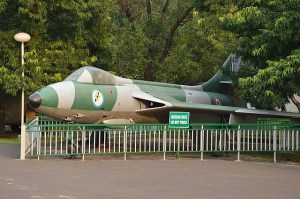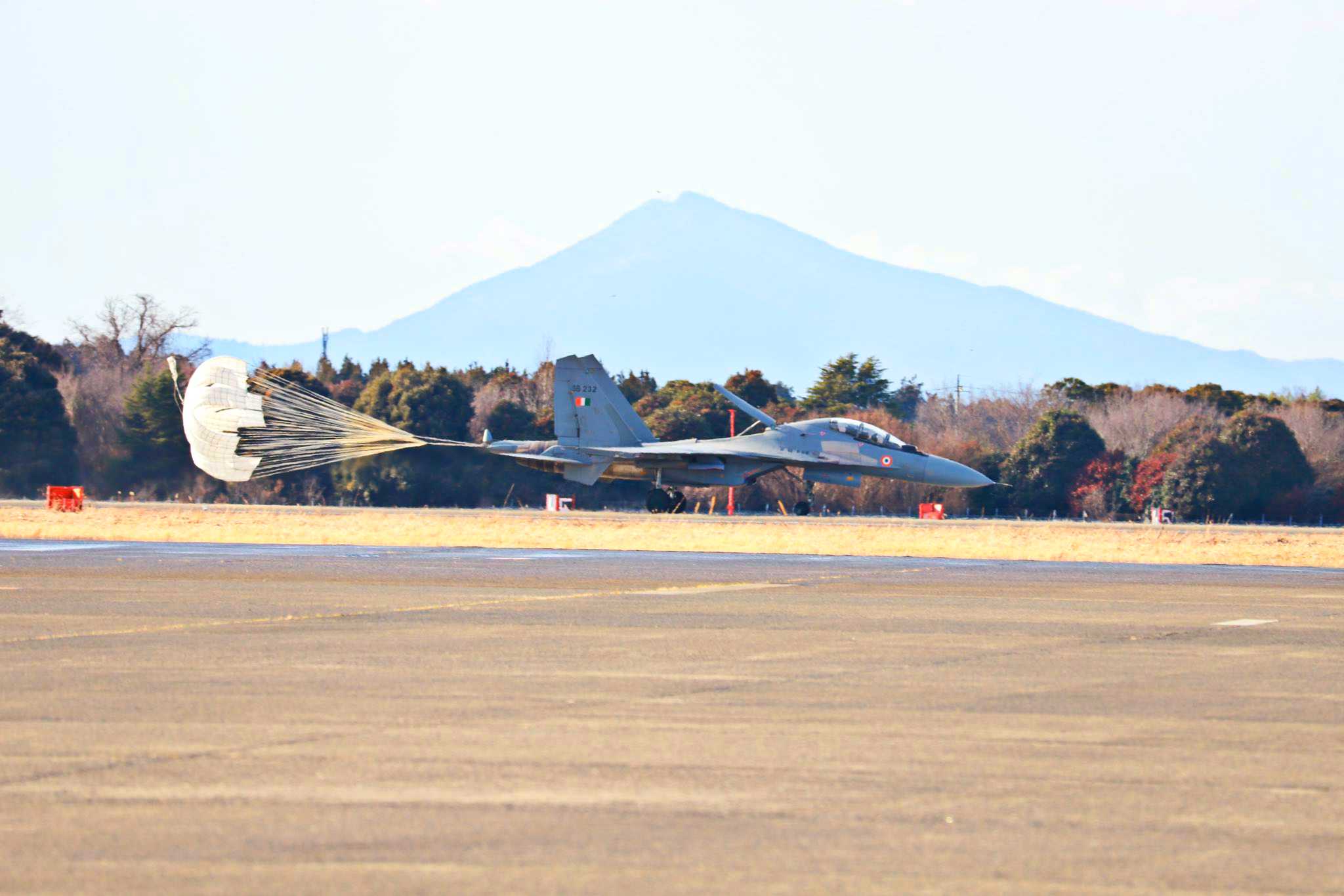It is a feat that has not been accomplished by any modern-day air force since World War II. In the 1971 war, the Indian Air Force (IAF) not only dominated the skies over Pakistan in a matter of two days, but it was also able to capture an airfield in erstwhile East Pakistan and wreak havoc against Pakistan Air Force (PAF) and Army from their airfield.
PLARF – China’s Rocket Force Plagued By Poor Quality, Corruption; Bulk Of Missiles May Never See Action
Defying the diktats from the US, India entered a war against Pakistan on December 4, 1971. To cover East Pakistan, separated from West Pakistan by a 1600-kilometer-long Indian territory, the IAF activated three civil fields at Dum Dum, Panagarh, and Agartala.
The objective of the IAF was clear – to achieve control of the air by D+2 (two days from D-Day) and to neutralize PAF’s lone squadron of Sabre fighter jets operating from East Pakistan.
The intelligence available to Indian forces suggested that only one squadron of F-86 Sabres transonic fighter jets was operating from East Pakistan. The IAF deployed ten squadrons in the East.
“This (India’s ten squadrons) is against one squadron of F-86 of the PAF, although some inputs from defecting Bengali officers of the PAF pointed to a larger deployment by the PAF. But this lone squadron could operate from several airfields, the most likely being Kurmitola and Tezgaon in Dhaka area and others being Chittagong and Jessore,” Air Vice Marshal AK Tiwary (retired) recalls in his book “Indian Air Force in Wars.”
The PAF had just one fully operational airbase at Tejgaon near the capital city of Dhaka, from where the PAF was operating its lone squadron — a total of 16 F-86 Sabre combat jets. This was the only air base in East Pakistan capable of undertaking sustained air operations.
Several satellite airbases were at Chittagong, Comilla, Jessore, Barisal, Ishwardi, Lalmunirhat, Cox’s Bazar, and Shamsher Nagar. The Sabres had adopted the tactics of relocating to different bases when their mother base was bombed.
The PAF carried out a pre-emptive strike on December 3, and this paved the way for the IAF to start air warfare in the East. The honor of initiating the war was given to Mukti Bahini Air Force, the air arm of the guerrilla forces aimed at creating an independent Bangladesh.
It was operating the Otter aircraft and French Alouette helicopter given to it by India and attacked the oil installations at Narayanganj and Chittagong and set them on fire.

The Swan Song Of Hunters
When hostilities commenced, the IAF mounted the first strike against Chittagong using 14 Squadron’s Hunters. The Hunter alone had the legs to fly to Chittagong. Despite the IAF’s numerous raids, little had been achieved in destroying PAF Sabres on the ground.
Air combat efforts seemed more encouraging – five Sabres had been claimed downed. The IAF’s Hunters had done well on the first day, shooting down three Sabres. Hence, attempts continued to lure the Sabres for air combat.
From December 4 onwards, airfield attacks were mounted by Hunters and Sukhoi S-7s, with the MiG-21 supersonic fighter jets providing escorts. A total of 109 sorties were conducted, and these successfully cratered East Pakistan’s runways.
The entry in the 14 Squadron’s Diary from the war acknowledged that the Commanding Officer of the unit, Wing Commander Sundaresan, got his Sabre killed during Day 1 of the strikes on December 4, 1971.
The Indian Navy’s aircraft flying from carrier INS Vikrant attacked the targets along the coastal areas and ports of Cox Bazar and Chittagong. “Total control of air had been attained. But all the PAF Sabres were not yet destroyed,” marked Air Vice Marshal Tiwary.
On December 7, the Indian Army declared the capture of Jessore. The Indian Army chief, General S.H.F.J. Manekshaw, issued a message to be broadcast to the 70,000 Pakistani troops in East Pakistan: “Officers and jawans [soldiers] of the Pakistan Army, lay down your arms before it is too late. Time is running out. Indian forces have encircled you. Your fate is sealed.”
The message, which was to be broadcast to the Pakistanis every half‐hour by All India Radio, told them that their escape routes by sea and air had been blocked, that they had no hope of getting more supplies or reinforcements, and that their air force in East Pakistan had been virtually, wiped out.
The Fall Of Jessore
The IAF’s 14 Squadron directly supported the army’s line of advance. Four Hunters led by Wing Commander Sundaresan with KS Sidhu as Number 2 and the other section consisting of Squadron Leader MK Kashav and SK Chopra dropped Napalm, a first for the IAF, on Pakistan Army gun positions near Jessore. The Hunter Squadrons of the IAF alone had the requisite training and practice dealing with Napalm.
Napalm is a Gelatinous petroleum used to make bombs and as fuel for flame-throwers. It was developed during World War II and was widely used by US forces in Vietnam. When napalm hits its target, it spreads out, clinging to and burning everything it touches. The use of Napalm had not been made illegal then, but a United Nations convention forbids its use against civilian populations now.
The IAF’s 14 Squadron, called ‘Bulls,’ carried out more attacks on Jessore and dropped 1000 lb bombs against Barisal airfield. “No attacks on Tezgaon as UN Aircraft were evacuating foreigners. Eight Hunters of No. 14 Sqn later attacked Tejgaon runways with 1000 lb bombs after the UN aircraft take-off,” the diary entry on December 7 reads.
The Indian Army captured Jessore and presented the Eastern Air Command with a forward airfield that could be operationalized with minimum effort. Air Marshal Dewan flew by helicopter from Calcutta to Jessore, where a ground party carried out quick runway repairs. The airfield had an operational advantage as it would give Indian fighter jets more loiter time over Dacca and other targets.
The Indian Army’s engineers repaired the runway and called the Commanding Officers of 22 Squadron and 14 Squadron to explain the need to move to Jessore. The CO of 22 Squadron declined to move his Gnats to Jessore. For 14 Squadron’s CO Wing Commander Sundaresan, the opportunity to operate from a former enemy airfield was too good to pass up.
As the 7th fleet of the US Navy sailed into the Bay of Bengal to support Pakistan forces, the Hunters of the 14 Squadron carried out strikes against the retreating Pakistan Army. And on December 14, it landed at the Pakistan Air Force base at Jessore, “a historical first.”
“Ground equipment was flown in by Caribou (Canadian specialized cargo aircraft). The first landing (of the Hunter) on the 2700-yard runway was by Wg Cdr Sunderesan at 1445 hours, followed by the others. The 7th aircraft (BA340) flown by ‘Chopi’ got into an unfortunate accident with the left wing catching fire and the rockets going off, but the pilot got out safely,” the 14 Squadron’s records show.
From Jessore, the Fighting Fourteens ramped up attacks outside Khulna in close air support for the 14th Punjab unit of the Indian Army. In total, the Hunter aircraft conducted 90 sorties from Jessore.

By December 15, Pakistan’s defenses crumbled against India’s sustained air and land offensive, and Islamabad started discussing surrender terms. The Squadron personnel visited Jessore town to buy souvenirs, and the “populous was thrilled to meet the IAF personnel”. On December 21st, the 8 Hunters of the Fighting Fourteen took off from Jessore for their home base in Kalaikunda.
The 1971 war was one of the finest hours of the Indian Air Force, and as Air Vice Marshal Tiwary puts it: “For once, the Indian Army operated under similar air conditions as the US Army since World War II. That is, without worrying about the enemy air force. Most of the time, the air support aircraft were merely orbiting in the air, awaiting resistance on the ground so that they could provide aerial firepower in a matter of minutes.”
- Ritu Sharma has been a journalist for over a decade, writing on defense, foreign affairs, and nuclear technology.
- She can be reached at ritu.sharma (at) mail.com
- Follow EurAsian Times on Google News




